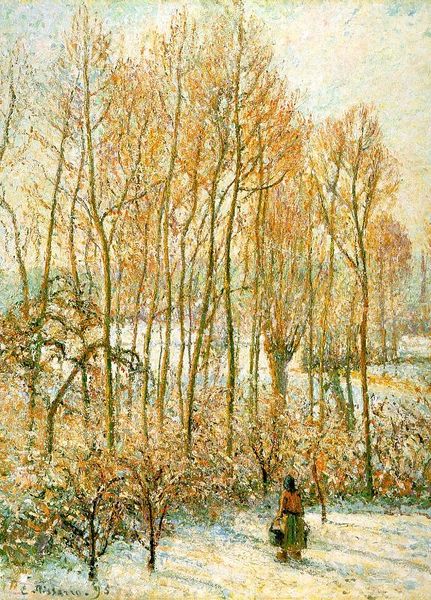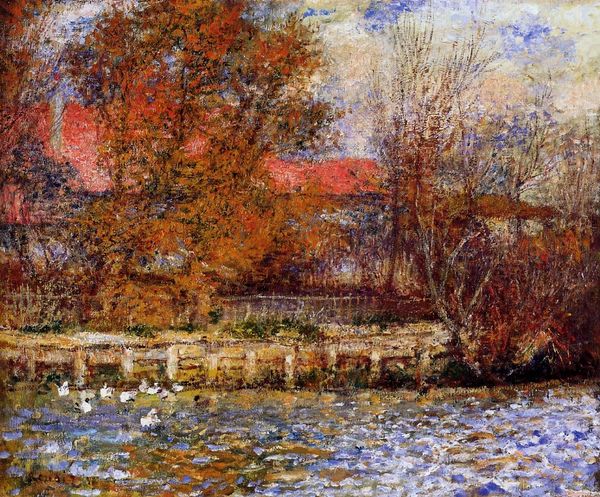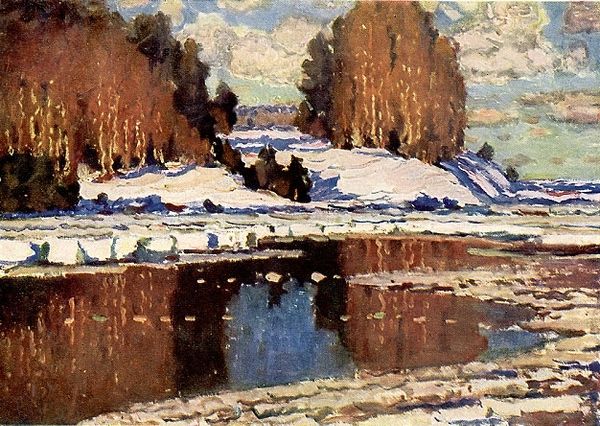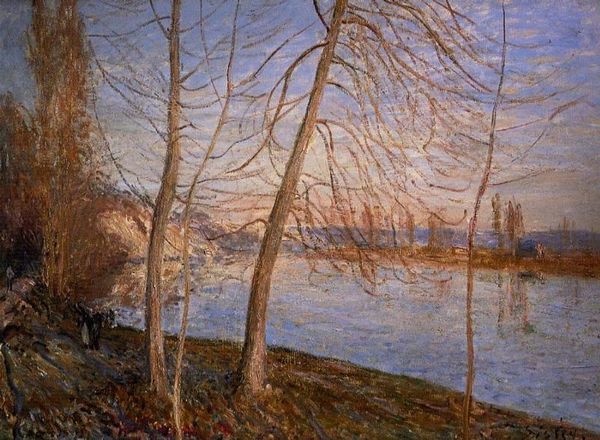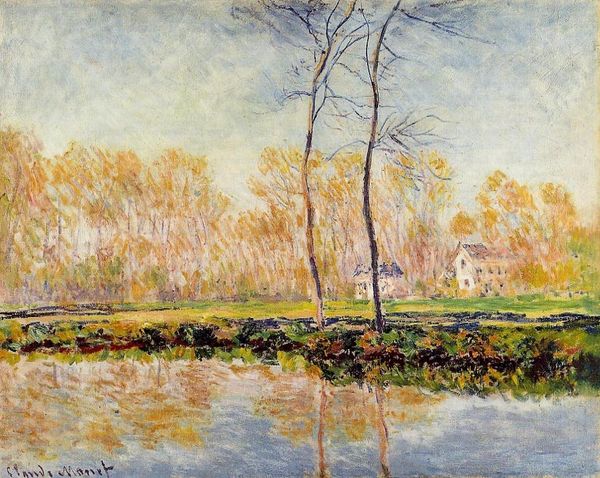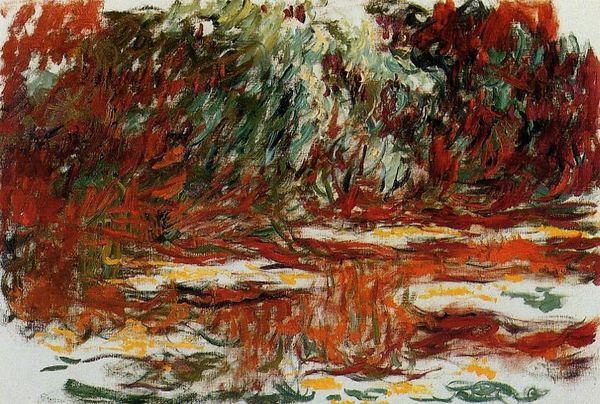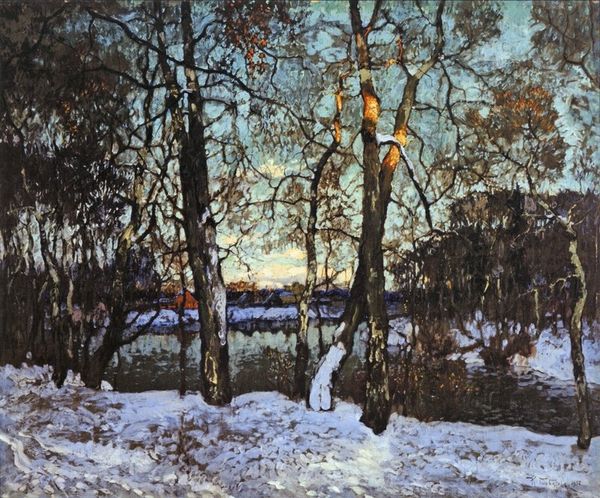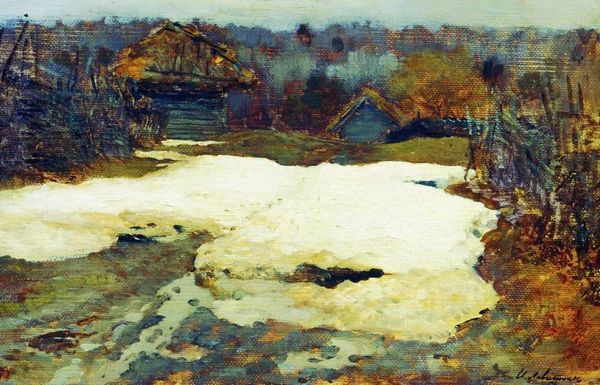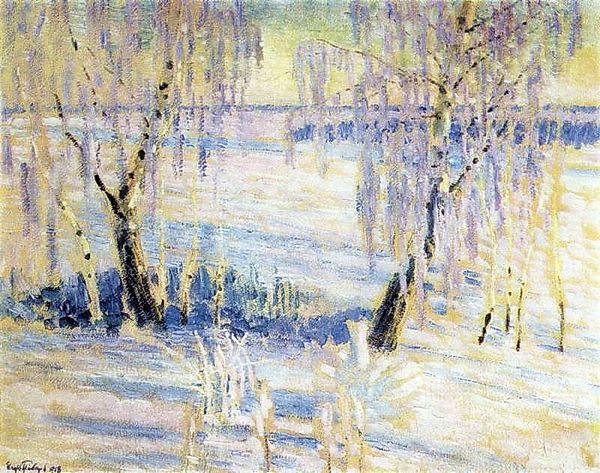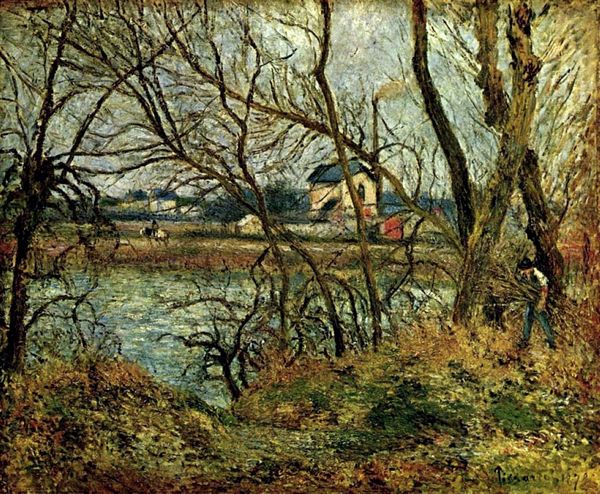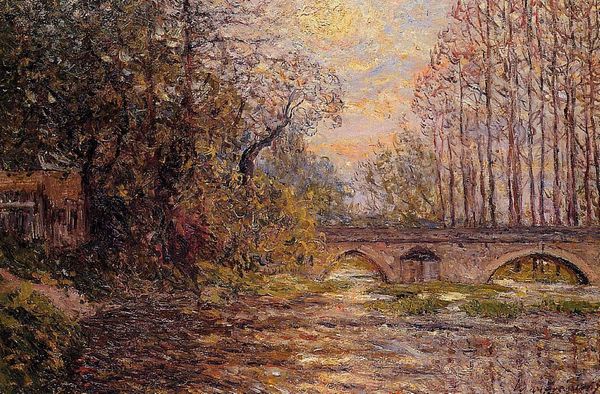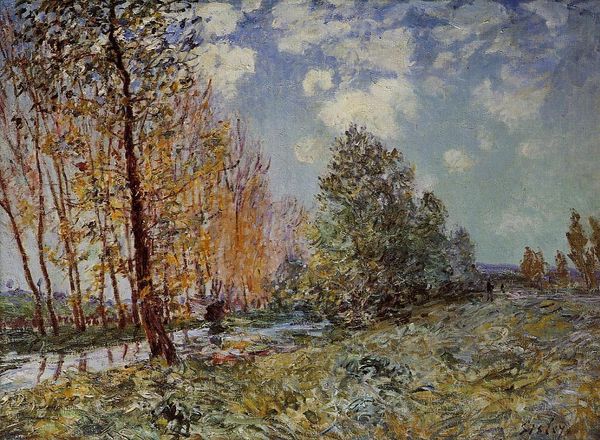
Dimensions: 70 x 89 cm
Copyright: Public domain US
Editor: So, this is "Spring Flow" by Igor Grabar, painted in 1904. It’s an oil painting and looking at the landscape, it evokes this feeling of transition, that moment when winter loosens its grip. What stands out to you most about it? Curator: For me, this piece speaks volumes about the complexities of seeing Russia through the lens of the early 20th century. Grabar, influenced by Impressionism and plein-air painting, wasn’t just capturing a landscape; he was negotiating his artistic identity within a rapidly changing socio-political environment. The thaw itself, depicted so vividly, could symbolize a breaking free from older, more rigid artistic and social norms. Do you notice how the brushstrokes almost vibrate with energy? Editor: Yes, the texture is so dynamic! It almost feels like I can feel the sun trying to break through. Curator: Exactly! And that's where the social commentary begins to seep in. Consider the historical context: the rise of revolutionary thought, the questioning of authority, a yearning for something new. The vibrant brushwork embodies this very spirit. Do you see the bare trees against the melting snow? This creates an interesting binary opposition between death and rebirth, an interesting play with the impact of modernization in society. Editor: That's fascinating. I was only seeing the surface, the pretty picture. I hadn’t considered the underlying social themes. Curator: Art is never created in a vacuum. Understanding the environment in which an artist operates helps us access deeper meanings. In what way could his queer identity be insinuated through this work? Editor: I hadn't considered that. Looking at how the trees almost intertwine, it makes you think about how it pushes against norms through abstraction, defying traditional definitions. Curator: Precisely. Grabar might have imbued his artwork with themes of love and identity through these metaphors, veiled and complicated. Editor: I’ll definitely view landscapes with a different perspective now. Thanks! Curator: And I, thanks to your keen observation of brushstrokes, noticed even more how form underscores meaning. It goes to show that both social context and close observation of the artwork are needed.
Comments
No comments
Be the first to comment and join the conversation on the ultimate creative platform.
